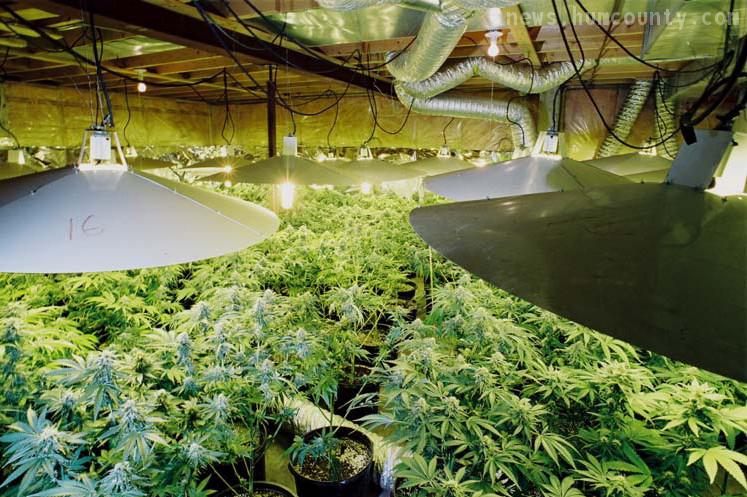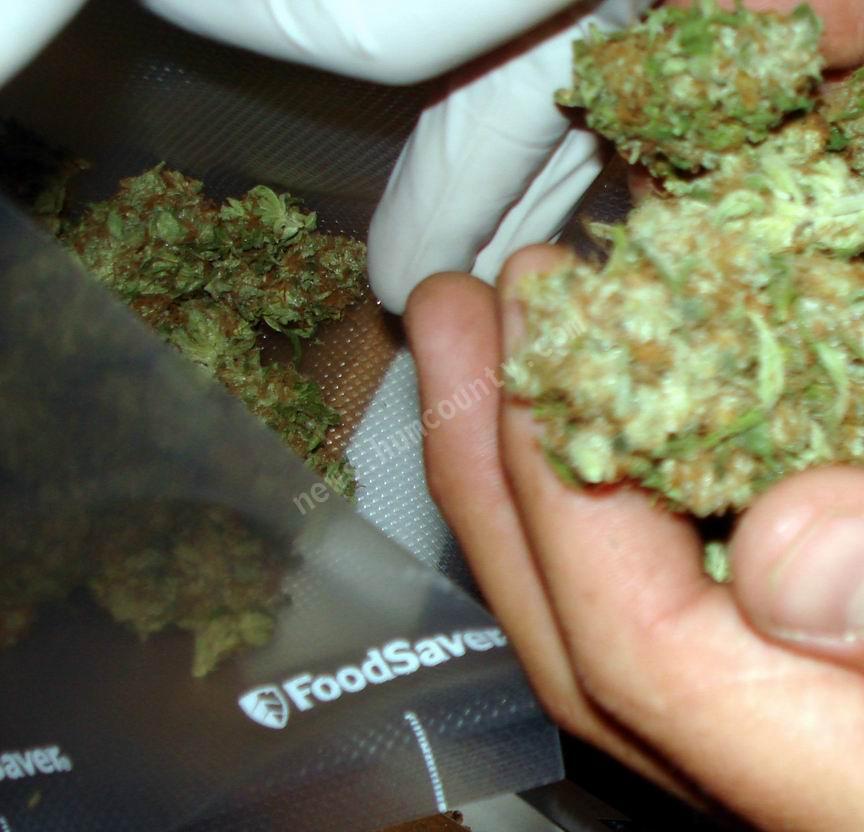Archives January 2011
How Much Money Do Pot Growers Make?

There are no accurate estimates of the number of marijuana growers operating in Humboldt County, much less the entire state of California. But we can be quite certain that the number is daunting, to say the least. There are about 78,000 people in Humboldt County between the ages of 18 and 65, and many locals would guess that, at minimum, 50% are involved in the marijuana production industry in some way.
We want to take a close look at marijuana growers in Humboldt -- the actual operators of indoor pot farms -- and examine how much money is involved in producing high grade marijuana here in California.
Like any business, there are many factors that go into running a production pot garden, so we'll end up with a range of income levels at the end of this article. Most importantly, not all growers use the same method, so timing and yields are kind of all over the place. Let's talk about timing first.
In our experience, more pot growers in Humboldt are concerned with quality and yield per plant rather than total yield per year, which immediately puts them at a disadvantage (from a business perspective). Growers are always bragging about how many pounds per light or ounces per plant they recently harvested, but generally ignore the amount of time it took their garden to produce those yields. There are also some very business-minded growers in these parts who measure their success and production in terms of pounds per year, and strive to produce the most product they possibly can each year so they can make as much money as possible. Either way, all indoor pot farmers must face the same expenses and similar market conditions, so we'll be looking at the cost of growing and the bulk price of high quality marijuana in the United States.
Overhead
Let's look at two very different, but very common, garden scenarios. Garden A is a four-light operation in an average Arcata home. Garden B is a 15-light operation in an average Eureka home.
Garden A | Garden B |
|
Rent: $1600 Lights: 4 x 1000 Watt Energy Consumption (veg): 504 Kwh Energy Consumption (flower): 2400 Kwh Energy Consumption (other): 114 Kwh Annual Rent: $19,200 Annual Electrical Cost: $7,300* Annual Materials Costs: $4,000 Annual Other Costs: $2,000 Total Annual Overhead: $32,500 |
Rent: $1400 Lights: 15 x 1000 Watt Energy Consumption (veg): 1890 Kwh Energy Consumption (flower): 9000 Kwh Energy Consumption (other): 171 Kwh Annual Rent: $16,800 Annual Electrical Cost: $26,900* Annual Materials Costs: $13,240 Annual Other Costs: $6,000 Total Annual Overhead: $62,940 |
| * based on PG&E rates | |
The table above pretty much lays out the costs associated with operating each grow house. We used PG&E rate information for the top tier of energy usage, because the vast majority of an indoor grower's electrical usage falls into this category. Material costs (soil, planters, fertilizer, new bulbs every 6 months, etc) are estimated and probably higher than the average grower incurs. We also ignored startup costs, since we're here to discuss how much an indoor garden can make after it is up and running, but for your information it generally costs about $1000-2000 per light to build out a new garden (construction materials, equipment, wiring, labor, etc).
Revenue
Garden A | Garden B |
|
Avg Yield (57 day cycle): 3.5 lbs Annual Yield: 22.4 lbs Total Annual Revenue*: $71,680 Less Overhead: -$32,500 Net Profit: $40,180 |
Avg Yield (57 day cycle): 12.5 lbs Annual Yield: 80 lbs Total Annual Revenue*: $256,000 Less Overhead: -$62,940 Net Profit: $193,060 |
| * at market price of $3,200/lb | |
Two things become abundantly clear based on the examples above: 1) Net profit margins are greater than 50% for marijuana growers, which is leaps and bounds beyond the net margins associated with the vast majority of legitimate businesses in the United States; 2) Growers with larger gardens are enjoying incredible profit margins, as high as 75% in this scenario.

Of course, the primary reasons that profits are so high in the marijuana business are that prices are inflated to account for the inherent risk of operating in an illegal market, and, most importantly, pot growers aren't usually claiming the income on their federal and state taxes, which allows them to keep an additional 15%-35% of their gross profit compared to what a legitimate business would pocket.
To be fair, there are many other factors that determine how much a professional indoor marijuana grower makes each year. Not all growers run a 57 day cycle. Many veg for 2 weeks or more, and flower for up to 60 days, which ultimately reduces their annual production to less profitable levels, and some skilled growers run a 50 day cycle, boosting their annual yields to even higher levels while cutting down on cost per cycle. And not everyone's weed sells for $3200 per pound. Some growers unload their product at lower prices, while others are able to charge as much as $4000 per pound to out-of-state buyers. And we must not ignore the occasional failed crop, due to disease, infestation, burglary, or other problems, which probably occurs at least once every dozen cycles (much more for less experienced gardeners).
Indoor Marijuana Farmer Annual Profit: $30,000 - $250,000
In any case, we hope this answers the question many Americans have been asking recently, with all the talk of marijuana in the news and on the streets: "How much money to marijuana growers actually make?" If you have relevant information on this topic, please leave a comment below.
 Subscribe
Subscribe